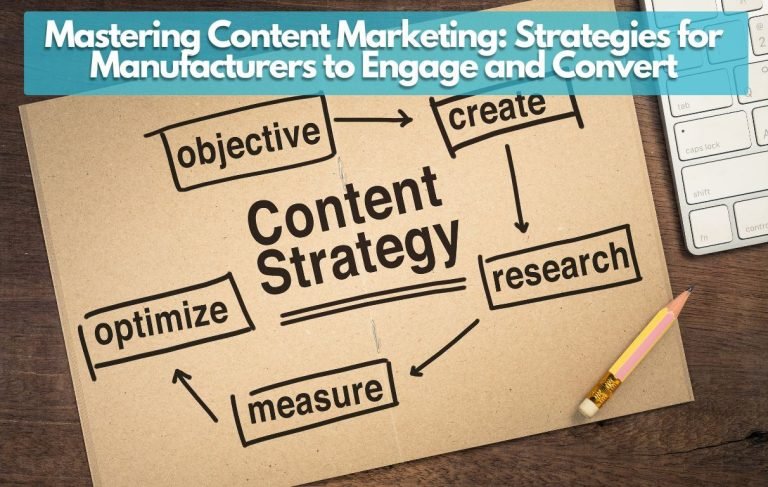Summary: Dive into the evolving world of digital marketing with our guide on Search Generative Experience (SGE). Learn how SGE is being set to reshape how we interact with search engines and how it will change user engagement and drive conversions.
Digital marketing is about to experience another significant shift with the introduction of Google’s Search Generative Experience (SGE). This marks a significant turning point, particularly for B2B marketers. Google’s innovative AI-powered approach could alter traditional norms of SEO and PPC by shifting focus towards a more user-centric model.
While details about Google’s SGE are still emerging, we will discuss what SGE is, it’s potential impact on search and digital marketing, and what it means for your business in 2024 and beyond. As marketing professionals for businesses of any size, keeping informed and adapting quickly is critical to remaining ahead in today’s highly competitive digital arena.
What is SGE?
Google’s latest attempt to enhance user search experiences via artificial intelligence technology is called SGE (Search Generative Engine). Unlike traditional search engines that yield a list of links, SGE provides users with direct, interactive responses. This means users can obtain comprehensive answers directly on the search results page without needing to click through multiple websites. For B2B marketers, this change requires a shift towards creating content explicitly tailored for user queries and needs.
For example, an SGE search query like “What is the best way to clean machined metal parts?” will display comprehensive, interactive answers that allow users to refine their search or get more information without leaving the search page.

Influence of SGE on Website Traffic & Engagement
The introduction of SGE will likely have a profound effect on website traffic and user engagement. The direct answering approach may reduce the volume of direct site visits, compelling marketers to reevaluate their content strategies. Traditional digital marketing strategies must evolve as the way users interact with search results will change. Regardless of the search query, the user will see answers and prompts where they can continue to click through and refine their query or get more information -without ever leaving the search result or landing on a website page.
Here is an interactive example of using SGE to search and purchase a new bike:

Early Adaption and the Challenges of SGE
While the impact of SGE on search and digital marketing may be enormous, it is essential to acknowledge that widespread adoption may not happen overnight. Past advancements, like voice search and Google Assistant, gained the attention of marketers, although we did not see immediate adoption among the general public. This highlights the need to take a cautious approach to SGE.
In addition to potential delays in user adoption, there are other challenges associated with using SGE, specifically regarding the accuracy of its responses, especially for proximity-based searches. In addition, SGE may not cater to all types of queries, indicating a coexistence of conventional search experiences alongside SGE experiences, at least in the near future.
How SGE Will Influence Advertising Strategies
The shift towards SGE signals changes in advertising strategies, specifically affecting click-through rates (CTR). Google ad reps already emphasize metrics such as cost per action (CPA) and return on ad spend (ROAS). While this transition may not lead to significant changes in actual performance metrics, it will likely influence advertising strategies. Looking ahead, this evolving landscape will require a closer collaboration between PPC and SEO specialists. This will emphasize better coordination between these specialized marketing disciplines and deliver more intent-rich experiences to users.
The Evolution of Keyword Research in SGE
With the adoption of SGE, traditional keyword research, a cornerstone of traditional SEO, may change. Optimizing for particular keywords may become less important than optimizing web pages for Google’s algorithms and user experience. Instead of placing a lot of emphasis on selecting the ideal keyword terms and match types, SEO experts may have to focus more on building optimized websites based on tracking conversions.
The total volume of searches is not expected to change as SGE becomes more widely used. However, search suggestions will likely change depending on user behavior and trends. This may impact the economic model, and ad placements in upper-funnel content—such as display and video ads—may increase due to advertisers’ increased interest in these types of content.
Navigating the Competitive Landscape and Expanding Skills
To stay competitive in an SGE-dominated digital marketing environment, marketers must expand their skill sets beyond traditional marketing disciplines. Proficiency in video production, advanced copywriting, and integrated marketing strategies will become increasingly valuable. Staying abreast of new trends and technologies and understanding how best to leverage them is vital to stand out in an ever-more-competitive digital marketplace.
Conclusion
Google’s Search Generative Experience is reshaping the digital marketing landscape, offering both challenges and opportunities for marketers. Companies should embrace this new paradigm by emphasizing user intent-based search strategies as they adapt their plans to meet the subtle requirements of AI-powered searches. The key to success in this new era will be a willingness to continuously innovate, adapt, and refine digital strategies in line with customer preferences and behaviors that change over time.
Stay ahead of the curve by keeping up with the latest developments and exploring how SGE can benefit your business by contacting a knowledgeable digital marketing consultant at Company.




